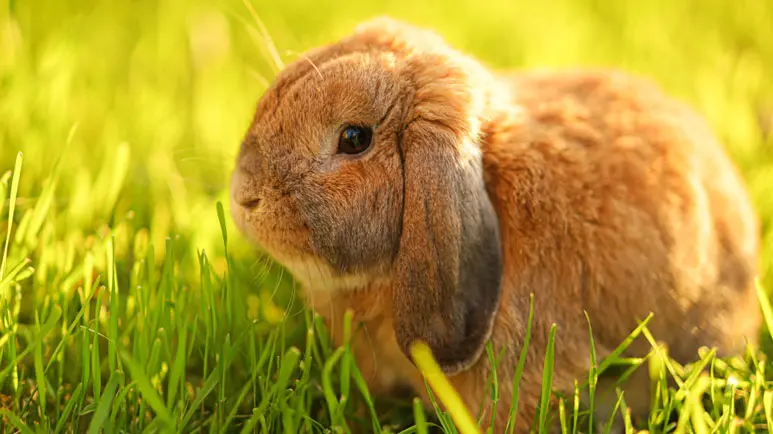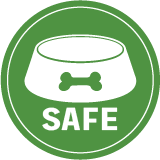Don't Let the Sunshine Spell Trouble for Your Pet
Summer can be a fun time, but for small pets, it can be downright dangerous without the proper protection. Learn how to create a summer survival plan that your pet will thank you for — no fancy equipment or expensive supplies needed.

STORY AT-A-GLANCE
- Small pets, such as rabbits, can't sweat or pant, making them highly vulnerable to heatstroke in the summer. Without your help, they could silently suffer from life-threatening overheating
- Heatstroke signs — like rapid breathing, hot ears, and lethargy — often appear late. Older, overweight, or sun-exposed pets are at the highest risk, so early prevention is crucial
- Create a cool haven with full shade, proper ventilation, cooling tiles, and frozen water bottles. Even minor adjustments can significantly improve your pet's summer comfort
- Hydration is key. Offer cool water in bowls and bottles, and feed water-rich veggies. Clean enclosures daily to prevent flies and dangerous fly strike
- Groom regularly, watch for subtle signs of heat stress , and act quickly if they appear. A calm, shaded, well-kept environment helps your pet stay healthy and happy all summer
Warm weather can lift your mood and brighten your day, but for your furry companions, the heat can bring discomfort, stress, and even danger. While you might enjoy lounging in the sunshine or going for a walk in shorts and sandals, your small pet — especially rabbits and other small mammals — may be struggling in silence.
Many pet owners are unaware of just how sensitive these animals are to heat. Rabbits, for example, don’t sweat like humans or pant like dogs.1 Instead, they have limited ways of regulating their body temperature. That means when the temperature outside spikes, these small pets could quickly go from warm and sleepy to dangerously overheated.
Why Summer Heat Is So Risky for Small Pets
Rabbits and other small animals (like guinea pigs, hamsters, and chinchillas) evolved to live in cooler, shaded environments. In the wild, rabbits escape the heat by digging into burrows underground, where the temperature is naturally regulated.
However, domestic rabbits don’t have that option. And since they can’t sweat, they employ other methods to cool down, such as:2
- Dissipating heat through the blood vessels in their ears.
- Stretching out on cool surfaces to reduce body temperature.
- Evaporating moisture by breathing through their nasal passages. They also exchange heat through mucous membranes in their nasal passages.
Without your help, these natural cooling strategies often fall short, especially during heat waves, in poorly ventilated spaces, or when pets are confined in full sun. According to Petplan:3
"The ideal temperature for outdoor rabbits is between 12°C and 21°C (54°F and 70°F). While most rabbits can tolerate temperatures as high as 25°C (77°F), anything above this can increase their risk of heatstroke."
Understanding the Danger — What Is Heatstroke?
Heatstroke is more than just a little discomfort; it's a life-threatening emergency. When your pet’s body temperature rises too high and they can’t cool down, their organs begin to shut down. This can lead to permanent damage or death within a short time.4 Symptoms of heatstroke include:
- Rapid or shallow breathing
- Hot, red ears
- Weakness or sluggish movement
- Nose wetness
- Limp or fully stretched posture
- Panting (open mouth breathing is rare in rabbits and a bad sign)
Certain pets are at a higher risk of heatstroke. In rabbits, these include obese rabbits, those over 5 years old, and those living in enclosures exposed to direct sunlight.
What’s more, heatstroke symptoms in rabbits aren’t usually noticeable until things are severe, so you may not notice a problem until it's almost too late. That’s why prevention is key.
A 3-Step Summer Strategy — Shade, Comfort, and Ventilation
Keeping your pet cool doesn’t mean moving them into an air-conditioned space. You just need to make a few adjustments to transform your pet’s living area into a cool summer haven.5
- Avoid direct sunlight at all costs — Place your pet's hutch or cage in a shady spot, such as under a tree, against a wall that blocks afternoon sun, or even inside a shed or garage with adequate ventilation. Remember, even partial sun during midday can turn a hutch into an oven.
If moving the enclosure isn’t possible, use a large patio umbrella, garden tarp, or shade cloth to block direct rays. A simple towel or sheet can also help, as long as air can still flow freely around the space. - Choose materials that stay cool — Plastic and metal enclosures heat up fast and trap heat. Wood stays cooler and is better insulated. Ensure there's plenty of open space for airflow, consider using mesh panels, open doors, or screened windows.
Place cooling tiles inside the enclosure. Ceramic, marble, or slate tiles are great because they’re naturally cool to the touch. On a particularly hot day, pop them in the fridge or freezer first for extra comfort. Your rabbit will love lying flat on them to cool their belly and legs.
Another great idea is to place a simple frozen water bottle wrapped in a towel inside your rabbit’s space, where they can lean against to cool themselves. You can use several, rotating them in and out of the freezer during the day. - Keep the air moving — Stale air is a major contributor to overheating. Good airflow helps your pet feel cooler, even if the temperature isn’t dramatically lower.
Provide a small fan nearby (but don’t aim it directly at your pet) or install a mesh window in a shed for passive airflow. Keep the opposite ends of an enclosure open for a cross-breeze, or drape a damp towel over part of the hutch or cage to create a basic evaporative cooling system (but ensure there is room for airflow). If using fans, ensure that exposed cables are kept away from your pet so that they cannot chew on them.
Provide Fresh Drinking Water at All Times
In the summer, pets lose water more quickly. Even if you don't see them sweating, they're still expelling moisture through their breath, urine, and skin. Ensure your pet always has access to multiple water sources, whether from a bowl or a bottle. You can also feed them fresh veggies with high water content.
Rinse leafy greens in cold water before serving.6 Cucumbers, celery, romaine lettuce, and bell peppers are excellent hydrating snacks. But go easy on fruit — too much sugar can upset your pet’s digestion.
You can also drop a few ice cubes into your pet’s water bowl for refreshing hydration. Just make sure not to add too much, as water that’s too cold can be unpleasant to pets as well.
Grooming and Hygiene Matter More in Summer
Warm weather can lead to faster hair growth and increased shedding, particularly in breeds with thick coats. Brushing your rabbit regularly helps reduce excess fur, allowing air to reach their skin and keeping them cooler.
Clean their hutch or cage daily. Urine and droppings heat up in warm weather, attracting flies. A clean space stays cooler and healthier; it will also help ward off flies, which thrive in warm, dirty environments.
What's worse, flies can lay eggs on your rabbit — usually around the rear end — which hatch into maggots. This painful and deadly condition is called fly strike, and there are sure signs to keep an eye out for, such as:
- Fur loss or irritated skin
- Open wounds or sores
- Damp fur around the rear
- A strong smell
- Lethargy or sudden behavior changes
Fly strike is an emergency and can lead to seizures, collapse, and even death. If you suspect it, call your vet immediately. Check your rabbit's rear end twice daily in summer, especially if they're long-haired, elderly, or have digestive issues that cause messy droppings. Other preventive strategies include regularly cleaning their enclosure, using fly screens or rabbit-safe repellents, and removing uneaten food before it becomes rotten.7
Watch for Signs of Overheating
Even with all your efforts, your pet may still overheat, especially during heat waves. Hence, you must be aware of the early warning signs so that you can act promptly. Here's what to do:
- Move your pet to a shaded, well-ventilated area.
- Mist their ears with cool water (not cold).
- Offer fresh, cool water.
- If your pet seems lethargic or ill, bring them to the vet asap.
Never soak your pet in cold water — it can cause shock. Instead, focus on gentle, slow cooling, and always seek professional advice if symptoms don't improve quickly.8
Do Pets Eat Less in Hot Weather?
Yes, many small animals eat less during the summer. Their digestion slows down in the heat, and they may take more naps. That's normal, but you should still monitor their food intake.
Try offering smaller, more frequent meals and weigh your pet weekly to ensure they aren't losing weight. If they seem to be losing a lot of weight, consult your vet before considering switching to nutrient-dense food (consult your vet on this).
Final Thoughts — Keep Cool and Carry On
Your pet depends on you to keep them safe, especially during hot summer days. Luckily, with some preparation and awareness, you can make summer comfortable, safe, and enjoyable for your small furry companions.
Before you reach for your sunglasses and iced tea, check your pet and ensure they're comfortable, too. Remember, your pet needs a shady spot, some cool water, and a little extra TLC. Summer can still be their favorite season — if you make it pet-friendly.










